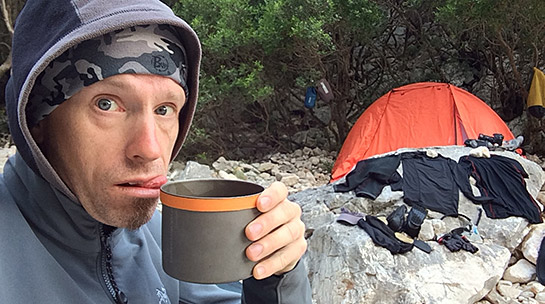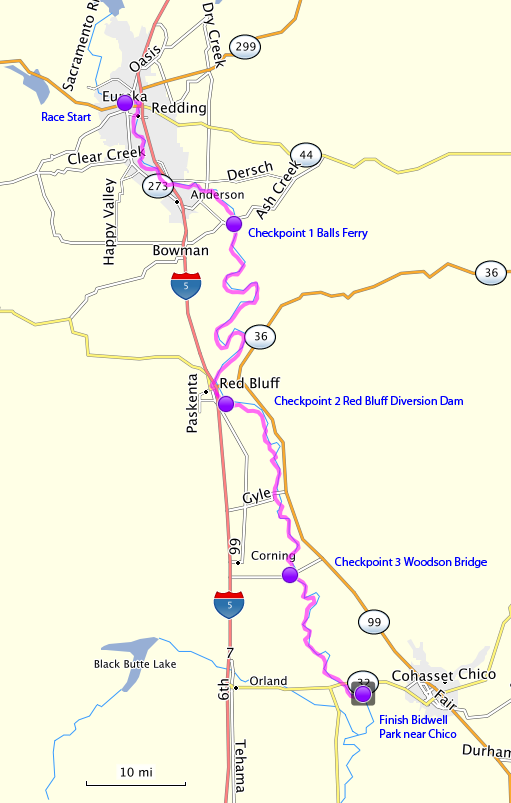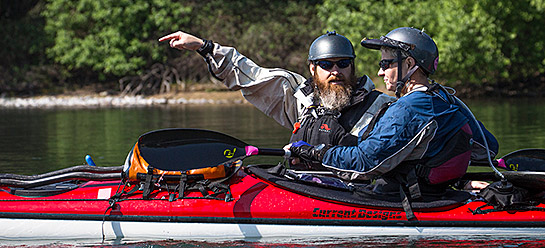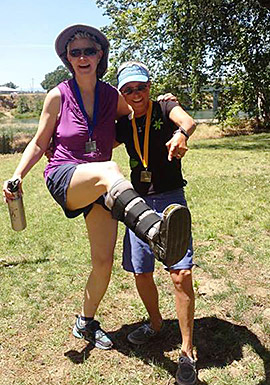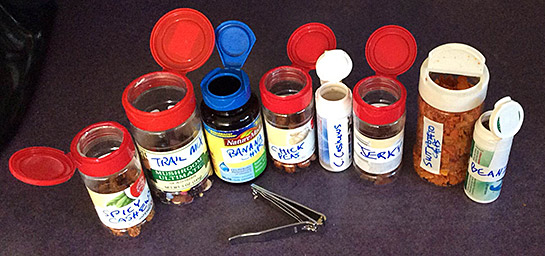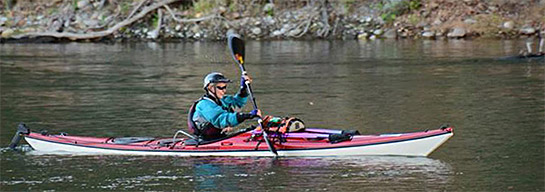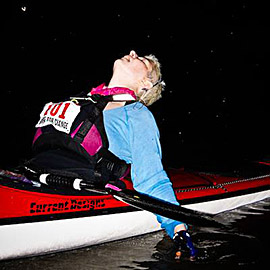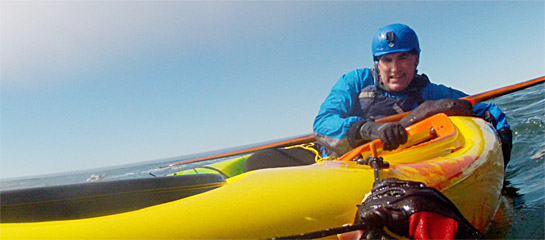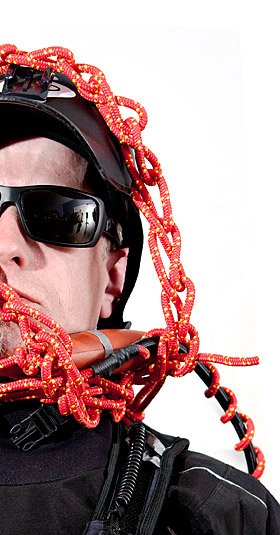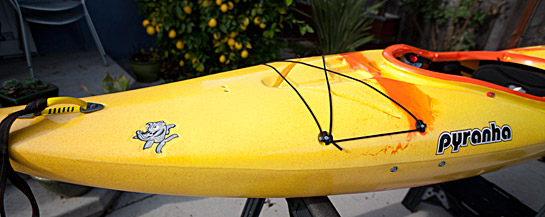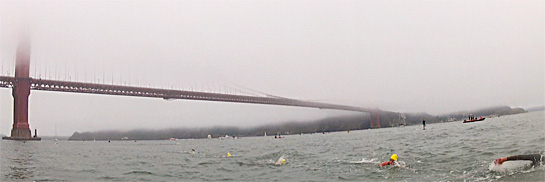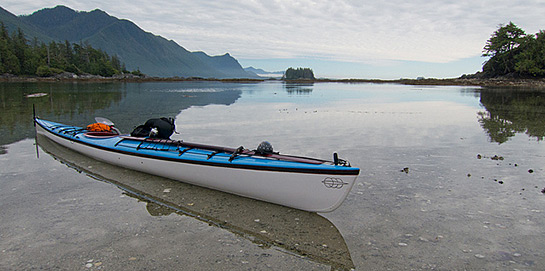
My QCC Q700x in between the main islands of the Bunsby Group, West Coast, Vancouver Island.
It’s been almost a year since my last post, and since my 2-week trip to Vancouver Island. I thought I’d share some of the learnings I had from that trip, across several articles. First, I’ll follow up where I left off: The boat I used for the trip, the QCC Q700x.
In short: It did great, overall.
Construction
The beaches that we encountered were usually broad and shallow. This meant that you can land and be within five boat lengths of your camp, but you have quite a haul in the morning when the waterline is now 20+ meters away when the tides turn. In this regard, the lightweight construction of the Q700x was dreamy. However, that also meant that caution – nay, paranoia – was needed when even thinking about moving the boat with any weight in it. No, you’re not supposed to move a fully loaded boat. But you’ve got to do some dragging or short-distance lifting when launching – hence my application of KeelEazy. But, after two weeks, no cracks, pops, or scary sounds.
A surprising frustration was actually the interior of the boat’s hatches. My right index finger had a preternatural ability to find exactly where that roughly-finished edge of carbon fiber was, getting a shard jammed under a fingernail quite a few times. Better attention to interior finishing would have saved me a few drops of blood, a lot of screaming, and plenty of obscenities. What’s more, the boat seems to be constructed with an outer core of fiberglass and an inner wrap of carbon fiber. This means, of course, that the interior of the boat is pitch black. I seriously thought I lost a couple of small bags (black, naturally) of expensive bits until I realized that they were all the way in the bow or stern compartments. One bag remained missing for 5 months until I found it again!
However, these interior misadventures also speak to the Q700x’s vast storage area. Without a skeg, the rear compartment is especially cavernous. However, the hatches and low deck heights confound all ability to get a rigid bear canister anywhere except in front of the footpegs in the cockpit. The rear hatch is big enough but the rear deck is too low, while the front hatch is too small but has the appropriate volume within. By using flexible Ursacks, I managed to fit all my food and smelly bits just fine.
While QCC doesn’t publish volumes on their website, I’d say that the interior hatch volumes on the Q700x total between 190 and 210 cubic liters.
Ergonomics
As mentioned previously, the deck of the Q700x is low. The benefit to this is an extremely comfortable low-angle touring stroke; I was often using an 84″ Greenland paddle with a short loom, and it was comfortable to use such a short paddle all day long. However, this wound up somehow straining my legs in a strange way, probably because I couldn’t raise my knees very high. My guess is that the pressure on my hamstrings from the upswept front edge of the seat pan caused both my hamstrings and the muscles around my sit bones to ache and spasm. By the end of the trip, I couldn’t paddle more than 90 minutes without stopping to lift my behind out of the seat and stretch.
I actually carved up part of my sleeping pad and made “donuts” of closed-cell foam to try and alleviate the pressure on my sit bones while also raising my bum slightly. This helped a little. After the trip, I switched out my standard Skwoosh gel seat pad with a thicker one, but that hasn’t helped. I just think that my legs need more bend than the Q700x’s low deck will allow.
The hatch design of the Q700x makes them tough to pry off if your hands are wet and you’re exhausted from a day’s paddling, but they were extremely dry during the trip. Their design does catch a lot of debris right around where the “weather strippping” attempts to make a seal, so I found myself cleaning the hatch lips a lot with my fingers before launching. Pebbles and sand were everywhere.
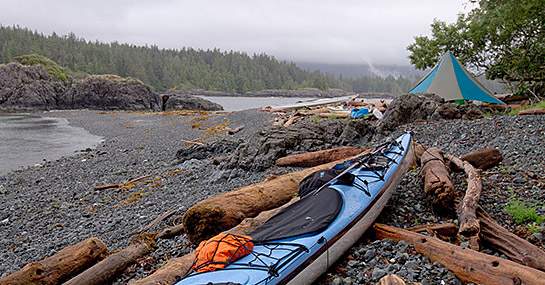
Q700x in the Cuttle Islands. One of my top five favorite campsites ever!
Handling and Performance
With a short 84″ Greenland paddle, touring was comfortable but slow; that paddle is my “rock gardening GP,” anyway. With a standard-sized Euro paddle, I was off like a rocket. Sustaining high speed was nearly effortless, and I constantly had to throttle down to stay with my companions. The Q700x’s low, soft chines don’t impart the world’s best secondary stability, but I never capsized accidentally in any conditions, and the boat just generally wanted to remain upright. Twitchy at first, confidence inducing with some experience. Its extreme length and plumb bow sliced right through waves, but I didn’t detect a particularly splashy paddling experience.
The biggest conditions we encountered were off Tachu Point, where a long underwater spit causes swell to rise up and break nearly a mile offshore. We were able to avoid the worst of it by navigating around the spit with a marine GPS unit, but at times we found ourselves in very steep 2-3 meter swell. The Q700x yawed like crazy on wave crests, and didn’t really find its direction again until the rudder bit back into the wave face. But over time, it all kind of evened out: It was a frustrating lack of control at first, but over time (and with better timing on little sweep strokes on wave crests) a more relaxed attitude and cadence let the boat kind of find its own way, the yaws averaging out over an hour to really still hold a pretty good heading. But it did so with a noticeable lack of efficiency. Here’s where a skeg – or a rudder and a skeg – would have added a lot more efficiency and reduced yaw.
We did a little bit of following of the coastline on a choppy day – not rock gardening, exactly, but certainly up close and personal with rocks. Dynamic and fun, but as you might imagine, a boat with very little overall rocker that’s 18′ long just isn’t very maneuverable. It’s the tradeoff for its excellent speed. It was responsive enough when I exercised good judgement, gave it the time it needed, and used supportive sweep strokes with an aggressive edge or lean. If you want to play the terrain you expedition in, you should probably be looking at a Tiderace XPlore, a P&H Cetus, or similar.
Of course, the boat just wanted to surf in straight lines all the time…assuming the wave period is long enough to not bury the bow into the wave in front of you. Seriously, this boat outpaced much of the surf I was in – a weird sensation. Still, this is wonderful, exhilarating, and fast – what surf ski paddlers live for – until you realize you’re heading towards a kelp patch and all those kelpy bits are actually otters in your way. I think I caused them more stress and fright by cringing and yelling aloud that I didn’t want to smoosh one than I did caroming down wave faces at them. It’s kind of like sharing trails when you’re on a mountain bike: Yes, the downhill rush is addictive, and speed helps your progress over obstacles, but you never know if a person or dog’s around the corner, so using caution and reasonable speed is the wiser course of action.
To my credit, the only thing I struck with my kayak was a 5′-wide ocean sunfish (video!), but that was only because he came to the surface between my bow and stern, and I didn’t see him below the water when I first passed over him. My rudder just clipped him (which rises out of the way under pressure, so no harm done), and he laid around for about five minutes not seeming to have been bothered by it. I did actually land on a beach without seeing a bear and her cubs on it, but that’s a story for another day…
Overall Impressions
The Q700x is absolutely an expedition-worthy boat if you know how to treat it and if the boat fits your body. It’s fast, sufficiently stable (poor secondary but strong initial for a rounded hull), and swallows a metric crapton of supplies and gear if you can be a little finessed with your packing. My modifications made it more livable and flexible for a camping trip. It’s done fantastic as a double-duty boat for expeditions and kayak racing (which I do a couple of times a year). It’s not a balanced boat: Its design makes a statement and takes a stand. You need to know what you’re in for: A go-fast, go-straight, fun boat with a streamlined sensibility and good cargo capacity, albeit with shallow heights. I have no doubts or regrets on my decision to put my life in its hands for two weeks in a remote region.
However: I’m selling it. The ergonomics just didn’t work for me: I must have a boat that I can potentially be in for up to 15 hours a day with no discomfort. I also love rock gardening and ocean play, which the Q700x just doesn’t deliver. What’s going to be replacing it? If you follow me on Facebook, you already know, but that’s a blog post for the future.
Read More
